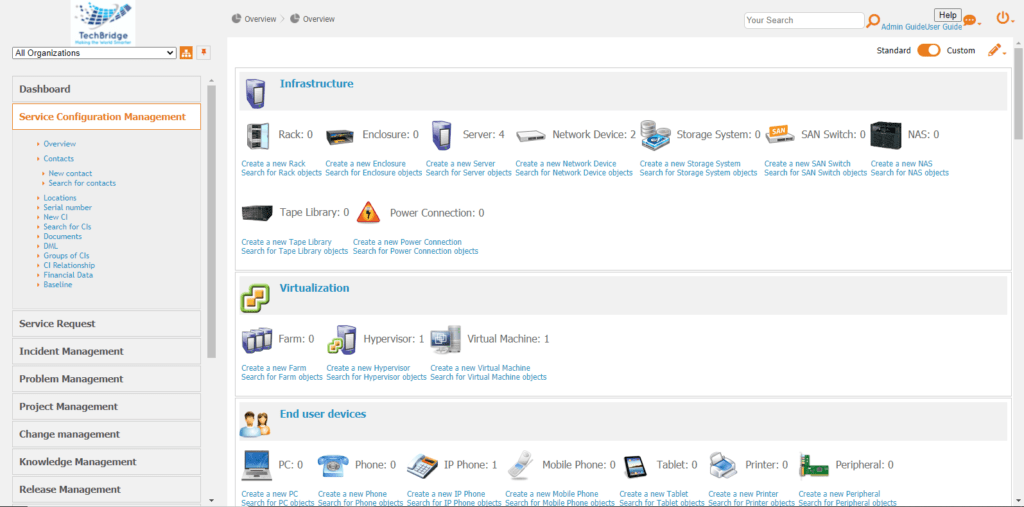Service Asset & Configuration Management (SACM)

Definition:- SACM is a combination of two important processes:-
- Asset management which addresses the assets you use to deliver IT services.
- Configuration management which tracks the configurations of and relationships between the various components (configuration items or CIs) of your various IT services.
Goals & Objectives:- The goal of SACM is to ensure that the assets required to deliver services are properly controlled, and that accurate and reliable information about those assets is available when and here it is needed. This information includes details on how the assets have been configured and the relationships between them.
- CI integrity and configuration must be protected
- All CIs are centralized in the Configuration Management System (CMS)
- Must support efficiently the other operational processes
Scope:- By definition, an asset means “any resource or capability”. Assets implicated in service delivery are identified as configuration items (CI); CIs can be physical (computer, server) or logical (application, documentation, process). Thus, we can state that each CI is an asset, but certain assets are not necessarily CIs; for example, the knowledge used by a Service Desk employee to manage incidents is an asset but is in no way a CI.
The SACM scope includes the entire lifecycle of each CI participating in IT service delivery.
Configuration Items:- A configuration item (CI) is a service asset that needs to be managed in order to deliver an IT service. The configuration items can vary widely in complexity, size and type, ranging from an entire service or system including all hardware, software, documentation to a single software module or a minor hardware component. They may be grouped and managed together, e.g. a set of components may be grouped into a release.
There is a variety of CIs, and every organization will decide whether each of these is a configuration item or simply an attribute of a configuration item (or even something that they do not need to manage). In addition, a change to a CI should be authorized by change management and the configuration item record updated. A control should be in place to ensure information integrity. Relationships should exist between CIs and with requests, such as incidents, problems, changes, etc.
The configuration information is saved in a CMDB. They can come from different data sources (finances, human resources) in order to create a federated CMDB. Every source will depend on the business unit that is responsible to , which should be responsible for making it available and keep it updated; agreements are to be expected in this regard. Data loading and updating automations should be implemented where possible to reduce errors and optimize maintenance costs. Discovery tools, inventory and verification tools, network management tools and enterprise systems can be interfaced.
Configuration Model:- Service Asset and Configuration Management delivers a model of the services, assets and the infrastructure by recording the relationships between CIs. This enables a better assessment of outage impacts, change impacts, a better planning of technology refresh and software upgrades, and an optimization of assets utilization and costs.
Configuration Baseline:- A configuration baseline is the configuration of a service, a product or an infrastructure that “captures” the structure, the content, the details and the relationships between CIs. It provides the ability to mark a milestone in the development of a service, build a service from a defined set of inputs, change or rebuild a specific version at a later date, assemble all relevant components in readiness for a change or a release or provide the basis for a configuration audit and back-out, in the case of a change.

